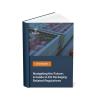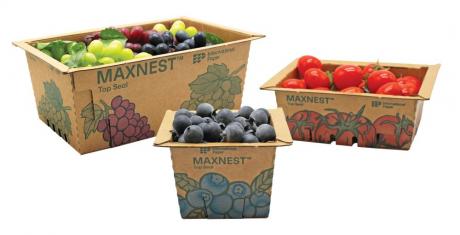Research and Markets, an Irish consultancy company founded in 2002, aims at connecting businesses with the market insights and analysis they need to enable intelligent decision-making. The business has recently published a survey about biodegradable packaging entitled: Biodegradable Packaging Market, by Product Type, and Paper, by End-Use Industry, and by Region - Size, Share, Outlook, and Opportunity Analysis, 2021 - 2028.
As the name suggests, biodegradable packaging involves the use of bio-based materials for packaging. These materials are mainly derived from renewable sources and are mostly bio-based polymers that are categorized into three types based on their source and production. The first category of polymers is directly extracted from biomass such as starch and cellulose. The second category comprises polymers that are produced by classical chemical synthesis using renewable bio-based monomers such as polylactic acid (PLA) and other polyesters. The third category comprises polymers that are produced by microorganisms and genetically modified bacteria such as polyhydroxyalkanoates (PHA), bacterial cellulose, and others.
Biodegradable Packaging Market (2021 - 2028)
Biodegradable packaging plays a vital role in the packaging industry due to ever-increasing consumer awareness and the importance of using eco-friendly products. Also, biodegradable packaging degrades easily and quickly and does not require the help of an external catalyst for degradation. Starch and polylactic acid (PLA) are the most widely used biodegradable plastic materials for packaging in various end-use industries. The food & beverage industry is the largest consumer of these materials, and the trend is expected to remain the same through 2028.
Europe dominated the global biodegradable packaging market in 2020, and the trend is expected to remain the same during 2021-2028. This is due to a number of causes, including rising consumer awareness of environmental issues, strict implementation of environmental laws, and increased research and development (R&D) operations in the production of bioplastics by key manufacturers. The European Union passed a strict resolution to reduce the overall consumption of thin plastic bags in the region by around 80% by 2019, which in turn, is expected to create major growth opportunities for biodegradable plastics & paper manufacturers over the coming years. Additionally, the reduction in the usage of conventional plastic bags is expected to directly boost the consumption of biodegradable plastic bags in malls, retail outlets, and loose packaging applications. North America is the second-most dominant region in the global biodegradable packaging market, and the regional market is expected to exhibit a CAGR (Compounded Average Growth Rate) of 23%, in terms of volume, during the forecast period. Increasing cost-competitiveness of biodegradable polymers, growing support from authorities for addressing solid waste disposal needs, and increasing public awareness of the environmental issues related to conventional packaging waste are the major factors driving the growth of the biodegradable packaging market in North America.
This report provides an in-depth analysis of the global biodegradable packaging market, market size (US$ Million & Kilotons), and compound annual growth rate (CAGR %) for the forecast period (2021-2028), considering 2020 as the base year. It elucidates potential revenue opportunity across different segments and explains an attractive investment proposition matrix for this market. This study also provides key insights about market drivers, restraints, opportunities, new product launches and competitive strategies adopted by key players. It profiles key players in the global biodegradable packaging market based on the following parameters: company overview, financial performance, product portfolio, geographical presence, distribution strategies, key developments and strategies, and future plans. The global biodegradable packaging market report caters to various stakeholders in this industry including investors, suppliers, biodegradable packaging manufacturers, distributors, new entrants, and financial analysts.









